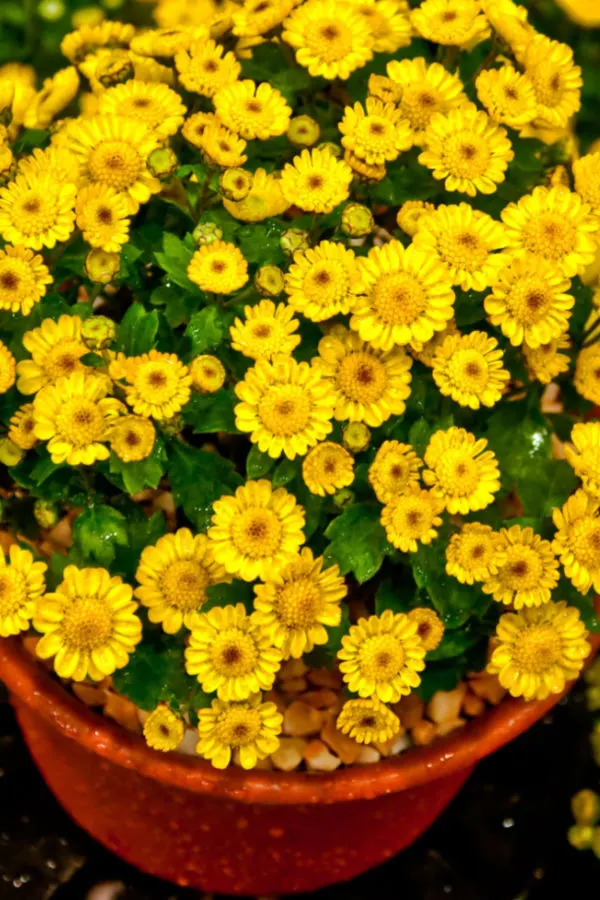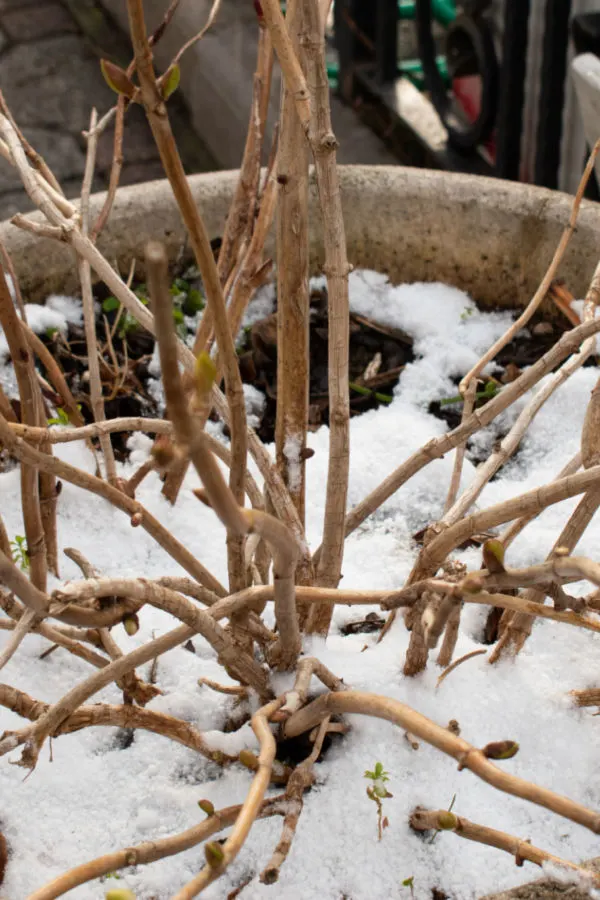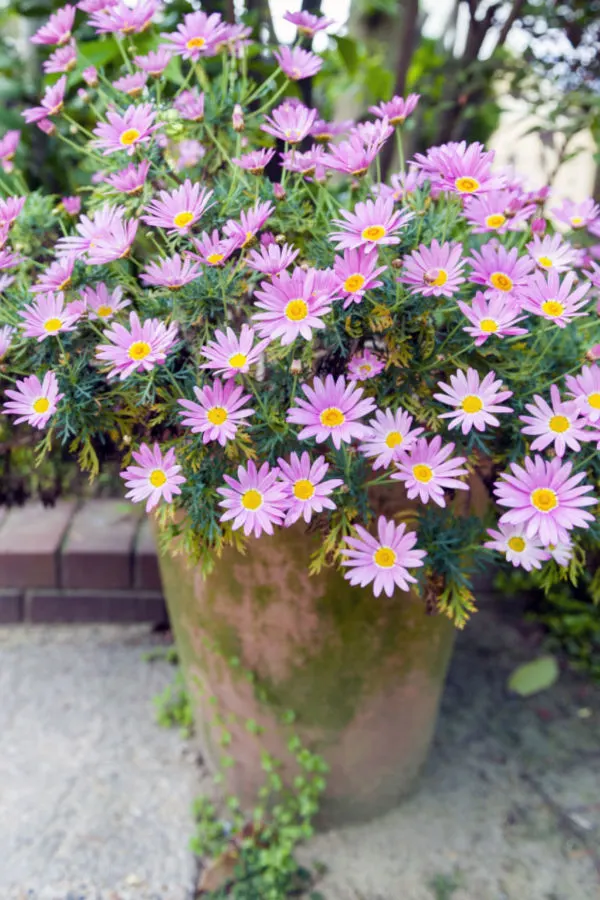Looking for a way to save those beautiful potted asters you purchased this fall to decorate your home and landscape?
Asters are becoming more and more popular for Autumn decorating with each passing year. With deep green foliage and radiating blooms in a wide array of bright colors, their fall blooming cycles add big late season interest.
As a perennial, asters look right at home in flowerbeds and raised beds. Not only are they low maintenance, they also happen to be highly drought and deer resistant, But asters also perform extremely well in small pots, containers and hanging baskets – making them perfect for using on porches, patios and anywhere you might need a little flowering fall color.

But perhaps what makes potted asters most attractive is that they can be saved at the end of the fall decorating season. Much like mums, asters are a hardy perennial. And with just a little fall care and preparation, potted asters can be overwintered quite easily to grow again next year.
Not only can that help to save big money on your fall flower and decorating budget each year, the beautiful plants can also fill your flowerbeds and landscape with gorgeous foliage and flower power all season long.
How To Save Potted Asters To Grow Again!
Keeping Perennial Plants Safe From Winter’s Fury
As a perennial growing in traditional flowerbeds, asters need little help in the fall to survive winter. Hardy from growing zones three through eight, once their roots have established in the soil, they can more than handle a frigid winter.
In fact, for most hardy perennials, it is not freezing temperatures that cause a problem with their health. Instead, perennial plants suffer the most winter damage when they are encounter a large number of quick freezing and thawing episodes.
Fast freezing and thawing leaves the roots of a plant vulnerable. The plant simply can’t go fully into dormancy when this occurs over and over. Unfortunately, if the temperatures do plummet down extremely low, it can then freeze the roots of the plant out completely.

When growing in the ground, the roots of perennials are usually protected against quick freezing and thawing. The ground, especially with a layer of mulch on top, freezes slowly, and thaws slowly. Because of that, perennials like asters that are established in the soil overwinter quite well.
Protecting Perennials In Containers – How To Save Potted Asters
When growing in a container however, it is a completely different story. Containers do not have the advantage of the surrounding soil to help with thermal retention. Nor a thick layer of mulch on top to keep heat in either.
On a sunny or more mild winter day, the sun’s ray’s and milder climate can easily heat up the soil within a pot. Likewise, when temperatures suddenly plummet, the container’s soil freezes solid in short order. And the result? Well, for potted asters trying to survive winter outdoors, it is usually not good!
So what is the best way to overwinter and protect your fall potted asters? There are actually a few methods that can work well. One involves bringing them indoors – while the other two keep your asters outside, but with a better layer of protection.
How To Save Potted Asters Indoors
When saving potted asters, more than anything else, it’s important to never allow them to experience a freezing night without protection. When a hard frost or freeze is in the forecast, get them indoors!

Asters can certainly handle a frost or a very light freeze without suffering too much injury, but if the temperatures get low enough, and they often do in the fall, it can wipe them out. And once that happens, there is no bringing them back.
If you will be saving your asters indoors, it is really best to start moving them inside before a constant barrage of frosts or a hard freeze arrives. And before moving them indoors for the winter, there are a few simple tasks you will want to complete first.
How To Save Potted Asters Indoors – Preparing Plants For Success
First, begin by cutting your aster back to about three to four inches above the soil line in the pot. The foliage is going to die back as the plant goes dormant, and this will help keep the process from making your indoors messy from the dropping leaves.
Next, if your container has any foil or special decorative wrap, remove it at this point. This will allow the plant to breathe far more easily throughout winter. Although the plant will go dormant indoors, it still needs oxygen to survive, and decorative wraps can hinder oxygen flow.
Much as with any plant, proper moisture is a must for winter survival as well. With that in mind, lightly moisten the soil of your pot when you first bring it indoors. As for location, it’s best to store your aster plants in a cool area with low to medium lighting. The only real key is to make sure it is not an area that can freeze if the temperatures get too cold outside.

Basements are usually the ideal location. Unheated but protected garages also work well. Even a cool room in the interior of your house will work. Just be sure to keep the plants away from drafts or heating vents. Continue to water plants every few weeks to keep the soil slightly moistened.
Bringing Aster Plants Back Outdoors In The Spring – How To Save Potted Asters
If you are overwintering your aster plants indoors, you can begin to bring them outdoors as soon as the temperatures start to warm into the low 50s (Fahrenheit) during the day. This will allow the roots to start warming and begin to bring the plant out of dormancy.
As with all potted plants in early spring, always bring plants back indoors when there is a threat of a freeze or frost. If you will be planting your asters into flowerbeds, you can transplant them into the soil as soon as the threat of frost is over.
If you, however, wish to keep your plants in a container, you will need to replant with new soil. Asters require a fair amount of nutrients to grow and bloom, and the soil from the previous year simply won’t have enough to do the job.
If your asters have grown in size, now is the time to split and divide them to create more plants. To divide, simply slice through the roots and soil into equal sections and repot.
Saving Potted Aster Plants Outdoors
If space is limited indoors, you can also overwinter your potted plants outside with a little additional help. The easiest method for this is to simply dig a hole the size of your container and “plant” your pots in the soil.
The surrounding soil will help to insulate the pot and keep the plant from constant freezing and thawing. Once you have your potted plants in the soil, finish with a thick four to six inch layer of mulch. When leaving plants outdoors, do not cut back the foliage, it actually helps provide protection. Simply place your mulch through and around the plant.
What about planting asters directly into the landscape out of their pots? Although it can successfully work, it has to be done early in the fall season. Waiting until late fall can be dangerous for the plant’s survival.
By pulling plants out of their pot, you disturb the roots. And if the roots don’t have enough time to re-establish into the surrounding soil, they will easily damage over the winter. For more on growing asters year round, be sure to see our article: How To Grow Asters. Here is to saving your asters this fall to grow again!
Follow Our Facebook Page For Great Gardening Tips And Advice! This Is My Garden Facebook Page
This Is My Garden is a garden website created by gardeners, for gardeners. Jim and Mary Competti have been writing gardening, DIY and recipe articles and books and speaking for over 15 years from their 46 acre Ohio farm. They publish three articles every week, 52 weeks a year. Sign up today to follow via email, or follow along!

